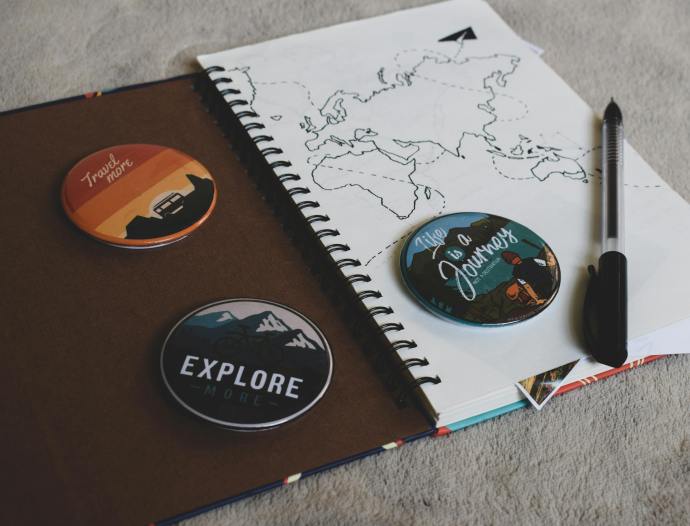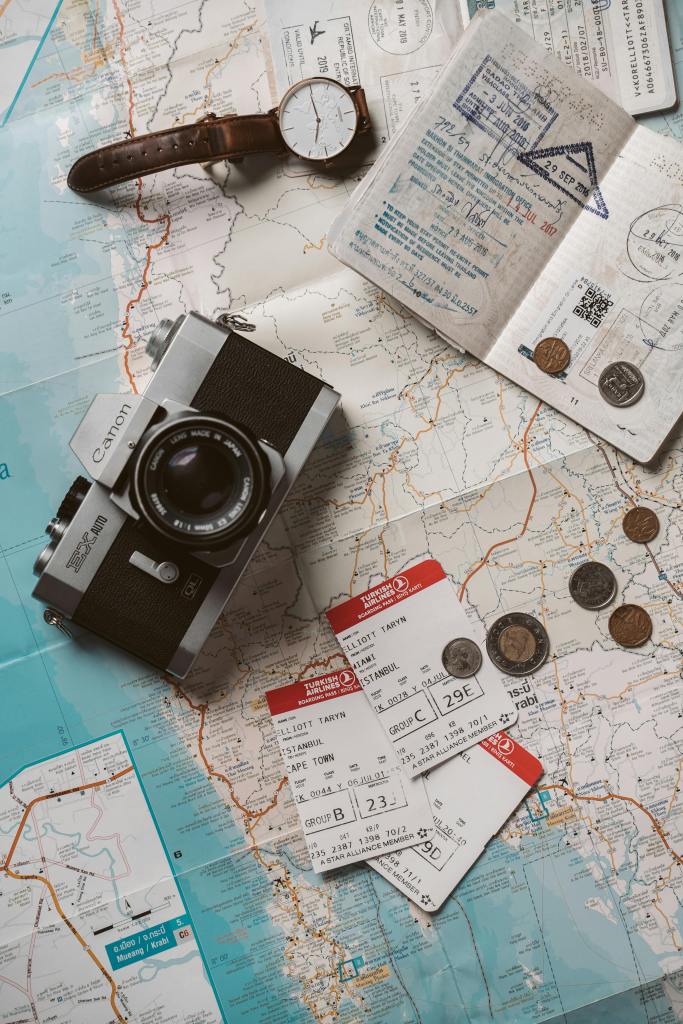Planning the perfect travel itinerary is an art that can transform an ordinary trip into an extraordinary adventure. Whether you’re dreaming of exploring ancient ruins, lounging on pristine beaches, or immersing yourself in vibrant city life, a well-crafted itinerary serves as your roadmap to success. It’s the difference between a stress-filled journey filled with missed opportunities and a seamless adventure where every moment counts.
Creating an effective itinerary isn’t just about listing places to visit – it’s about weaving together experiences that align with your interests while maintaining a balanced pace. It’s about finding that sweet spot between structure and spontaneity, between must-see attractions and hidden gems, between active exploration and relaxation time. Whether you’re organizing a weekend getaway or embarking on a month-long journey, following these comprehensive steps will help you create an itinerary that not only maximizes your time but also ensures a more enriching and enjoyable travel experience.
Let’s dive into the essential elements of crafting the perfect travel itinerary, from initial planning stages to final execution.
Table of Contents
1. Define Your Travel Goals and Style
- Determine the purpose of your trip (relaxation, adventure, culture, shopping, etc.)
- Consider your travel pace preferences (packed schedule vs. leisurely exploration)
- Identify must-see attractions and experiences/activities
Remember: The perfect travel itinerary reflects your personal travel style and interests. Don’t let yourself and your itinerary be dictated by others that might have different priorities and interests.

2. Research Your Destination
- Study the best time to visit based on weather and peak seasons. Of course, this also has to fit into your personal and professional situation and schedule. So you might not be able to pick the perfect time, but every destination should offer enough alternatives.
- Research local customs and cultural considerations. This not only lets you enjoy your trip more uniquely, but it also helps understanding potential preparation you have to do (e.g. bring certain clothes) and any limitations or drawbacks while traveling.
- Look into transportation options and logistics. How can you get from a to b and how much travel is needed while at your destination – for the Maldives you have to book transportation from Male airport to your hotel in advance; for a weekend in New York you should get familiar with the location of your hotel and whether you can walk to restaurants, shops and museums or take the subway or taxi.
- Check visa requirements and travel documents needed. I would consider this as one of t he most important steps before actually booking your trip. You might need a new passport or apply for a visa which always takes some time. So better get familiar with the requirements at a very early stage to not run into issues.

3. Create a Realistic Timeline
- Factor in travel time between destinations. There are endless examples of why this is important. Let’s take my upcoming trip to Dubai. Traffic has become a nightmare there (or already is for years…). So when planning dinner reservations I have to factor in enough time to get to the restaurants and make sure, my itinerary has enough room for it. Alternatively, I might re-arrange certain activities to better fit to respective dinner locations.
- Allow buffer time for unexpected delays. Always! Depending on location and situation this can mean a few minutes up to an hour or maybe even more.
- Include rest periods to prevent exhaustion. In combination with the mentioned buffer time this will make your trip far more enjoyable and stress-free.
- Consider jet lag recovery time if traveling across time zones. Ideally, you already know how your body reacts to the specific time difference, so that you can adjust your itinerary accordingly. If not, the overall rule is that it takes one day to adapt to one hour time difference. Also try to turn jet lag into something positive. When you travel from Europe to NYC for example, make sure to get up early – as it should be natural/easy for you – grab a coffee outside and enjoy observing the city come to life.
4. Organize Daily Activities
Group activities by location to minimize travel time. Here’s a sample structure:
- Morning: Start with major attractions when they’re less crowded
- Afternoon: Flexible activities or exploration time
- Evening: Dining and entertainment plans
Certainly, this is just one rough example, but it works well. I overall recommend to keep your afternoons rather flexible to cater for any delays or ad-hoc plan changes occurred throughout the morning or lunchtime.

5. Make Strategic Bookings
- Reserve accommodations in convenient locations. This usually also comes with a price mark-up but is usually worth it (unless you take it to extremes and want to opt for the absolute prime location). My favorite site for this is Booking.com.
- Book (popular) restaurants in advance. This is especially important for cities, but might even be required when you dine at a restaurant in your resort hotel.
- Purchase tickets for must-see attractions ahead of time. Not only will this save time, you can often get discounted rates or special access tickets.
- Arrange transportation between destinations where it makes sense and is possible. When you want to use public transport at a destination more frequently, try to get daily or weekly passes online before you arrive. If you want to use Uber, see if you can pre-book certain rides. Then you already know the price plus you have one less thing to worry about on your trip.
6. Create a Detailed but Flexible Schedule
Use the same format for each day. This not only makes planning easier, it also lets you better compare the plans for different days. And I know that not everyone is a fan of writing down a schedule, but I can only recommend implementing this step into your preparation as it definitely makes a huge difference in achieving a perfect travel itinerary. Here is one very simple example:
Day 1:
8:00 AM – Breakfast at hotel
9:30 AM – Visit main attraction
12:30 PM – Lunch break
2:00 PM – Guided tour
5:00 PM – Free time for shopping/exploring
7:30 PM – Dinner reservation
7. Include Essential Information
- Emergency contact numbers
- Local transportation details
- Confirmation numbers for bookings
- Address of accommodations (and restaurants?!) in local language
You should also make a copy of your passport and keep it at a different location than the original document.

8. Plan for Contingencies
- Have backup plans for outdoor activities
- Keep a list of rainy-day alternatives
- Have some additional restaurant options for the areas you are going to explore (plus some nearby your hotel)
- Note nearby medical facilities
- Consider travel insurance
What I also really like is to have a list of nice cafés within the areas of the respective daily activities. This is not mandatory, but when plans change or you have more free time than anticipated, it’s great to calm down and spend some time sitting and relaxing for a bit.

Pro Tips for Travel Success
After years of travel experience, here are some invaluable tips that can make or break your journey:
- Don’t overpack your schedule – leave room for spontaneity and unexpected discoveries
- Consider local meal times and business hours – many countries have different dining and shopping schedules than you might be used to
- Check opening days for museums and attractions – many popular sites close on certain weekdays rather than weekends
- Build in flexibility for unexpected discoveries – some of the best travel moments are unplanned
- Download offline maps and save important locations – technology can fail when you need it most
- Learn basic phrases in the local language – even simple greetings can and will enhance your experience
- Keep a digital and physical copy of your itinerary – technology isn’t always reliable
- Join local walking tours early in your trip – they provide valuable orientation and local tips for the rest of your stay
Final Thoughts
Remember that even the most perfectly planned itinerary should have room for adjustment. The art of travel planning lies in finding the balance between structure and spontaneity. While a well-crafted itinerary serves as your guide, it shouldn’t be a rigid constraint. Sometimes the unplanned moments – a conversation with a local, a stumbled-upon festival, or a recommended hidden gem – become the highlights of your trip.
The key is to use your itinerary as a framework while remaining open to the serendipitous moments that make travel truly magical. After all, the best journeys combine careful planning with the freedom to embrace unexpected adventures along the way. So in the end the perfect travel itinerary is one that provides everything your trip needs to be amazing without limiting your flexibility and creativity.
For more tips, also read my guide about how I always book the best hotels anywhere!





